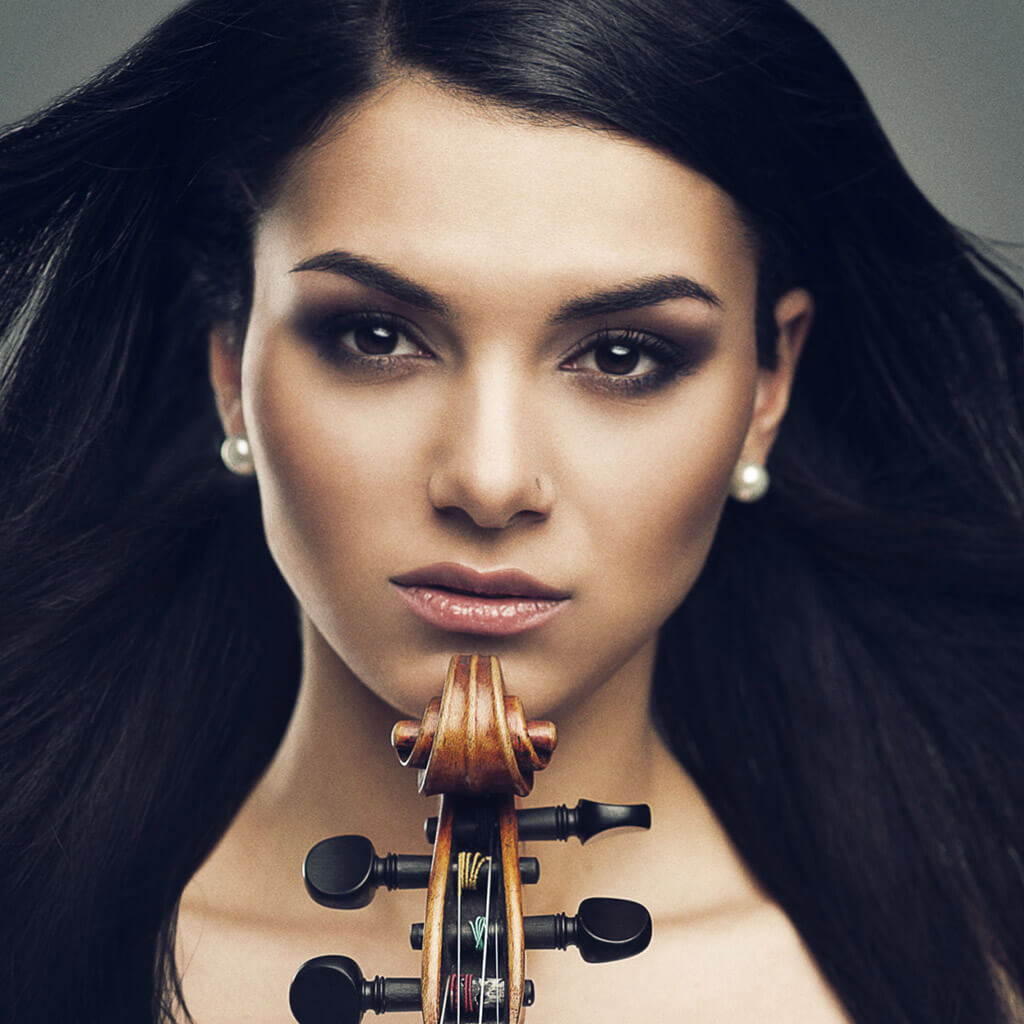
Over the course of several years of arduous research into Armenian music, violinist Nuné Melik releases her first album, Hidden Treasure, on the Dom Forlane label. The album is a return to her roots for this artist, who wishes to make this music — still largely unfamiliar in Canada — better known.
“It’s like a hidden treasure that I wanted to uncover,” said Melik.
Born in Siberia to parents of multiple heritage (Armenian, Georgian and Jewish), Melik’s first connection with music goes back to when she was four-years-old, accompanying her older sister to piano lessons. She recalled being impressed with her mother, who was not a professional teacher, but a nonetheless a good mentor.
Nuné Melik studied at the Moscow Conservatory, before being invited, in 2009, to join the Faculty of Music at the l’Université de Montréal. There she completed a Masters in performance, going on to pursue a doctorate at McGill University where she is now continuing her research into Armenian music. In the meantime, the Canada Council for the Arts Musical Instrument Bank awarded her a violin by Carlo Ferdinando Landolfi, dating from 1750, for her use until 2018. The instrument accompanied her to Carnegie Hall for her debut there last year.
Feeling nostalgic for home since her arrival in Canada, she has immersed herself in a musical universe that recalls her heritage. Here, she discovered a real passion.
“It made sense for me to make an album of Armenian music, especially as it is what I heard at home as a child,” she says.
Following a recital with pianist Michel-Alexandre Broekaert at Café d’art vocal de Montréal in late October, Nuné Melik emphasized:
“We cannot speak about Armenian music without speaking of the nation as well. It was destroyed in 1915 with the Armenian genocide, when more than half a million people perished. But we continued to make films, to write books, to compose music. ”
The violinist believes that the history of her country is reflected in its art.
Named a Cultural Representative of Canada in 2015 to commemorate the 100th anniversary of the Armenian Genocide, she adds: “The Armenian style is more emotional and more grounded in the earth. There is a freedom of form and content.”
Contrary to Western European music, the music of the East is distinguished by its unconventionality, she says.
Discovering the Armenian musical heritage
This growing passion for Armenian music led to a deepening of her research. The artist launched a crowdfunding campaign on the fundraising platform Kickstarter to defray the costs of several trips to Armenia, which allowed her to get a hold of scores that could not be found in Canada. The money raised also helped to finance the production of her album, Hidden Treasure, recorded at McGill University as well as at the Yamaha Artist Studio in New York.
“I went to the Composers’ Union in Armenia, who gave me access to some scary and very dusty places, searching for little-known sheet music,” recalls the violinist, who has crossed the Atlantic three times for the project. While in Armenia, she was not content with only scores; she also met with many composers.
Each work presented on the album has its own story. The first, Apricot Tree, by composer Komitas Vardapet (1869-1935), is a true representation of rural Armenian music. The same composer appears for two other pieces on the album: Striding, Beaming and Crane.
Aram Khachaturian (1903-1978) was inspired by the music of the Armenian troubadours, though with a more poetic approach.
“There are numerous references to Ravel, particularly in the texture of the piano,” specifies Melik about the Khachaturian. “I tried to choose repertoire that wasn’t too folk in style. It is both Armenian and International, in a language that everyone can understand.”
However, it is a piece by the same composer, Nuné’s Variation from the ballet Gayane, that attracts attention.
“Nuné, you have your own variation!,” joked her University professor. Like the violinist herself, the score is rhythmic and energetic.
The duo of Michel-Alexandre Broekaert (piano) and Nuné Melik will be on a national tour presented by Jeunesse Musicales Canada next year. A tour of China is also planned for 2019.
You can catch Nuné Melik perform in Toronto on Thursday, Dec 7 (7:30 pm) at The Yamaha Recital Space at Atelier Rosemarie Umetsu.
And she is also performing at an Armenian centre on Wednesday, Dec. 6.
#LUDWIGVAN
Want more updates on Toronto-centric classical music news and reviews before anyone else finds out? Follow us on Facebook or Twitter for all the latest.
![]()
- INTERVIEW | Why Everyone’s Talking About Violinist Nuné Melik - November 29, 2017



